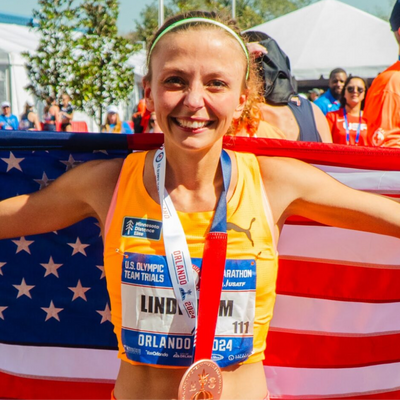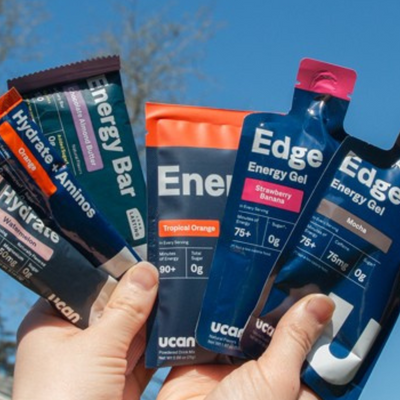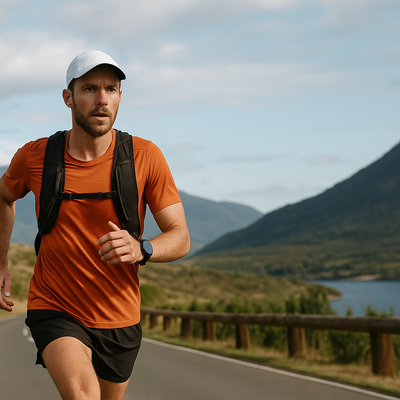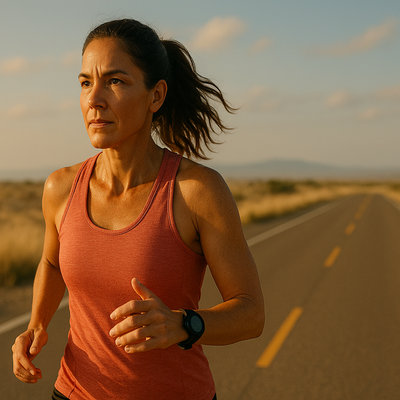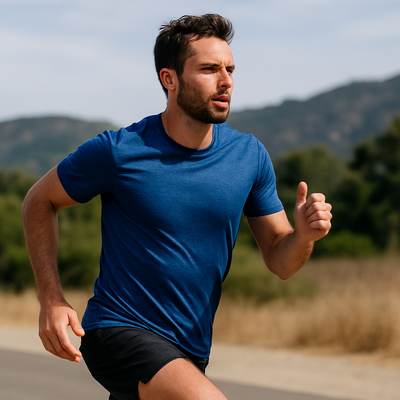Whether you're running a marathon, tackling a triathlon, or grinding through a century ride, your performance hinges on one crucial factor: your race day nutrition. No matter how well you've trained, poor fueling can derail your day. This guide helps you avoid the most common fueling mistakes and gives you a straightforward strategy to optimize endurance performance with science-backed tips—and smart product choices like UCAN Energy Gels, Energy Powders, and Protein + Energy.
Why Race Day Nutrition Matters
Endurance sports rely heavily on glycogen, your body’s stored form of carbohydrate. But glycogen is limited. Once it's gone, so is your energy. That’s why marathon fueling and long-distance nutrition strategies are essential for lasting power, avoiding GI distress, and preventing the dreaded “bonk.”
Common Fueling Mistakes to Avoid
1. Skipping Breakfast
Your pre-race meal helps top off liver glycogen stores depleted overnight. Skipping it risks early fatigue. Choose a low-fiber, carb-rich breakfast 2.5 to 3 hours before start time.
2. Trying Something New on Race Day
This one’s a classic for a reason. Don’t experiment with new products or eating patterns on race day. Practice your plan during long training sessions to fine-tune your gut’s tolerance.
3. Overloading on Sugar
Fast carbs might seem helpful, but too much sugar at once leads to energy spikes and crashes. It can also upset your stomach. Choose steady-release carbs to maintain blood sugar levels without the volatility.
4. Underfueling Early
Waiting until mile 10 to start fueling is too late. The goal is to stay ahead of depletion. Begin fueling within the first 30–45 minutes and continue at regular intervals.
5. Not Practicing Hydration
Hydration affects not just endurance, but your body’s ability to absorb nutrition. Train with the same drink strategy you’ll use on race day. Use electrolytes to maintain sodium balance, especially in warm conditions.
Ready to fuel smarter? Try a UCAN Starter Pack and experience the difference.
How to Fuel for a Marathon (or Half, or Long Ride)
The best fueling strategy is one that balances carbohydrate timing, digestion, and energy delivery. Here’s a simplified breakdown:
Pre-Race (2–3 Hours Before)
- Eat 100–150g of low-fiber carbohydrates
- Hydrate with water or an electrolyte drink
- Use
Energy Powder to preload with steady energy and avoid blood sugar spikes
30 Minutes Before Start
- Take one
UCAN Energy Gel to stabilize blood sugar and maintain energy through the start
During the Race
- Take 1 UCAN Energy Gel every 45–60 minutes
- Alternate with water or an electrolyte drink
- Practice your exact timing during training
Post-Race Recovery
- Refuel with 20–30g of protein and carbohydrates
-
UCAN Protein + Energy combines whey or plant protein with LIVSTEADY carbs to restore glycogen and support muscle repair
What Makes UCAN Different?
Unlike traditional sports nutrition loaded with sugar, UCAN uses a patented carb called LIVSTEADY®, designed for slow-release energy. It’s easier on your stomach, keeps blood sugar stable, and sustains endurance without the crash.
Ready to fuel smarter? Try a UCAN Starter Pack and experience the difference.
Scientific Support
Studies show that steady-release carbohydrates can improve endurance by maintaining glucose levels and reducing perceived exertion (Sherman & Maglischo, 2020). UCAN’s LIVSTEADY has been shown in clinical trials to enhance metabolic efficiency and lower insulin response compared to sugary sports drinks (Roberts et al., 2014).
Quick Fueling Tips
- Train your gut: Practice fueling in workouts
- Balance carbs with hydration: especially in warm weather
- Stick to a fueling schedule: avoid waiting until you feel tired
- Use products that are proven, steady, and easy to digest
FAQ
How much should I eat before a race?
Aim for 100–150g of carbohydrates 2–3 hours before your event. UCAN Energy Powder is a good low-fiber, steady carb option.
Can I use UCAN for shorter races?
Yes! Even 5Ks and 10Ks can benefit from a pre-race dose of UCAN Energy Powder or Gel to support stable energy without GI issues.
Is UCAN okay for sensitive stomachs?
Yes. UCAN’s low-osmolality formula is designed to be easy on digestion and is widely used by elite athletes with sensitive stomachs.
What’s the difference between UCAN Gels and other gels?
Most gels use fast carbs and sugar. UCAN’s Energy Gels use LIVSTEADY to deliver long-lasting energy without the spike or crash.
Can I combine UCAN with other products?
It’s best to stick with one fueling strategy. Combining sugary fuels with UCAN may disrupt the steady energy benefit.
Final Thoughts
Race day is the celebration of your training—and your fueling strategy should reflect that. Avoid the common mistakes, stick to a plan, and trust your gut (literally). UCAN makes it easier to go the distance without the crash, whether you're pushing a marathon PR or just finishing strong.
Ready to fuel smarter? Try a UCAN Starter Pack and experience the difference.
Sources:
- Sherman, W.M., & Maglischo, E.W. (2020). Sports Nutrition for Endurance Athletes.
- Roberts, M.D., et al. (2014). "Effects of a novel carbohydrate blend on glucose and insulin levels in athletes." Journal of Strength and Conditioning Research.
- Runner’s World: Race Day Fueling
- Featherstone Nutrition
- Mayo Clinic Health System


